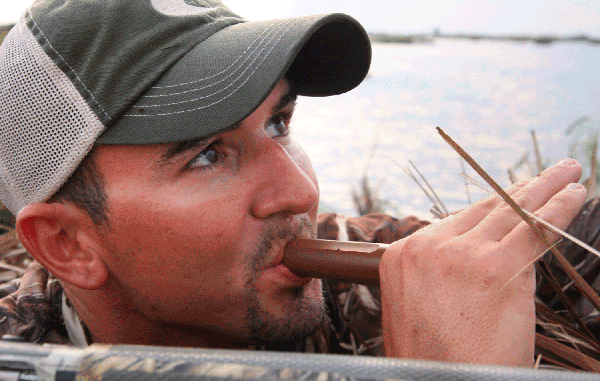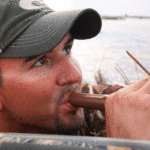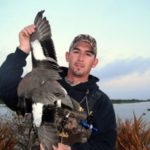
Teal season might not have been extraordinary in St. Bernard Parish, but this guide said he thinks the regular duck season should be bang up. Here’s why.
This past teal season didn’t exactly knock Capt. Chris Pike’s socks off. The Delacroix charter captain and duck-hunting guide hunted every day, and although he had some decent hunts, most days ended with a few empty spots on his duck strap.
The teal season might not have been all he expected, but if a late-October ride through the marsh was any indication, the big-duck season looks like it’s going to be much better.
“There were birds all over,” he said about two or three days after a late October cold front that dropped lows well below the seasonal average. “I guess that front pushed a lot of birds down.”
However, one thing that Pike did not find during that preseason scouting trip was anything for ducks to eat.
“There’s not a lot of feed,” he acknowledged. “There’s a little, but it’s mainly around the fresh water like the Lake Leery area and farther up north toward Delacroix.”
Pike expected to find lots of widgeon grass, coontail and hydrilla. In fact, the whole area south of Lake Leery is usually full of this kind of aquatic vegetation this time of year, but Hurricane Isaac definitely had something to say about that.
“Without question, the storm pulled all that grass out of there,” Pike said. “The bean-pod trees are still on the bank, but it’s the teal that usually eat those. They weren’t as affected because they’re basically a tree that grows on the bank.”
Truth be told, though, Pike doesn’t worry very much about whether the big ducks coming down to Delacroix have any grass to eat or not because he feels big ducks — gray ducks especially — don’t eat the stuff he can see as much as the stuff he can’t.
“I believe they don’t eat the widgeon grass and coontail, stuff like that, as much as they eat the small invertebrates and microscopic stuff like little crustaceans and snails,” Pike said. “Honestly, I focus mainly on where the birds are rather than where the feed is.”
In other words, Pike cares more about what ponds ducks use rather than why they use them.
Take the Biloxi Marsh for example: Pike sometimes sneaks over there when he isn’t guiding, and where he hunts right north of Mussel Bay there’s not one piece of grass in those ponds.
“But I probably shoot more gray ducks over there than anywhere,” he explained. “And I do the same thing over there I do on the lease in the marsh by Delacroix — find the line the ducks are flying and try to intercept them.”
Pike continually watches their flight patterns every day because he believes successfully killing ducks in the marsh is more about where they are flying than where they are on the water.
If flight patterns were city streets, Pike likened how being only 200 yard off can be the difference between killing ducks and watching them fly by.
“They might be using Causeway Boulevard one day and flying Bonnabel the next,” he said. “It’s maybe only 200 yards difference, but if you’re sitting on Causeway and they’re flying Bonnabel you’re not going to intercept them.”
When Pike finds a good pond in line with where the ducks are flying, he pulls in his mud boat and starts tossing out as many as five or six dozen colorful decoys like spoonbill, dos gris, widgeon and pintail to make sure he catches the birds’ eyes.
And he doesn’t deploy them in a typical V shape. Rather, he creates two large clumps of paired-up decoys with a landing zone in the middle between the two groups.
“I also continue to use multiple motion decoys,” Pike acknowledged, “but I don’t necessarily use them to attract ducks any more. I use them now to keep duck eyes on those spinning wings rather than on my blind when they’re coming in.”
To get the maximum benefit out of the attention-getting spinners, Pike places them out on the edges of his spread to the far right, far left or far out to the front. Then he waits for ducks to fly by.
“I hate to say this, but they don’t like a lot of calling — but they do like the right calling,” Pike said. “I hear too many people high-balling the whole time they’re out there calling at birds. I don’t want to high-ball at these ducks coming down.
“I think you just want to give them a soft marsh quack, like a little kaaaink, kaink, kaink.”
Pike mixes this soft call with lots of feed calls until he gets their attention, and then he switches to feed calls and whistles once he can read their body langue.
Once they show they want to come in, he backs off and lets the decoys do the rest of the work.
Since he carries all kinds of hunters with him when he is guiding, Pike prefers shooting the fastest shell he can find. Something in the 1,500- to 1,550-feet-per-second range in a 3-inch shell with 1 ¼-ounce No. 3 shot compensates for hunters who don’t swing fast enough on approaching birds.
“And I divide my blinds so that every hunter has a section to shoot,” Pike said. “The guy on the left gets maybe 9 o’clock to 11. The guy in the middle gets 11 to 1 o’clock. And the guy on the right gets 1 o’clock to 1 o’clock.”
Using this exact technique, Pike and his hunters killed about 800 birds from his blind alone, which he calculates was about a 12 duck per hunt average. That’s good hunting with two or three hunters in the blind.
“It was mainly gray ducks last season,” Pike said. “A lot more grays last year than in years past. And while I would rather stay on the big ducks, we had plenty teal last year — mainly greenwings.
“But I think we’re going to see a lot more bluewings this season because their numbers are up something like 70 percent from last year. We ought to be able to shoot teal every day all day throughout the season.”
So Pike said hunting any of the marshes along the southeastern coast of Louisiana means paying attention more to where ducks are putting down their feet rather than what ducks are putting in their bellies.
Get that figured out, and you’ll fill up those empty duck-strap loops in no time.
Just remember to pack an extra pair of socks because the ones on your feet are likely to get knocked off.
Editor’s note: Pike can be reached at 504-427-4973.


